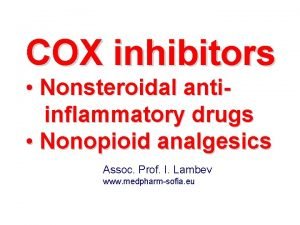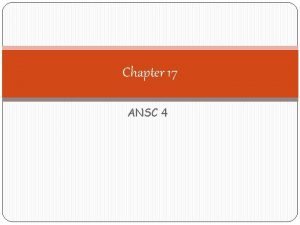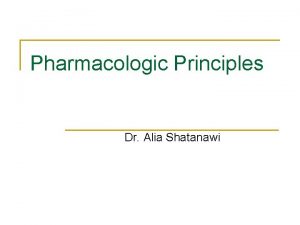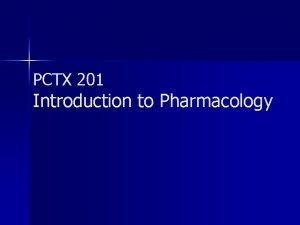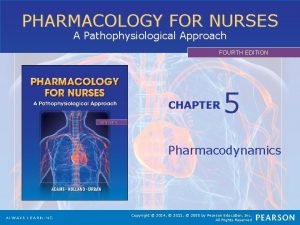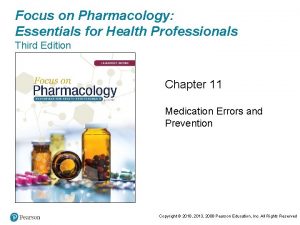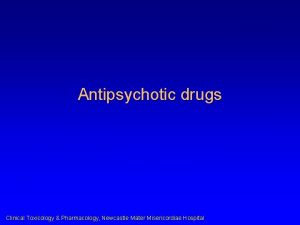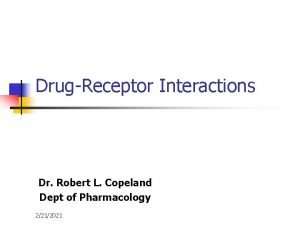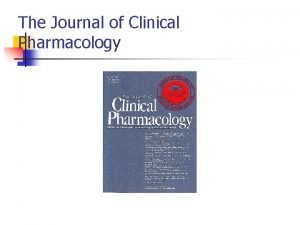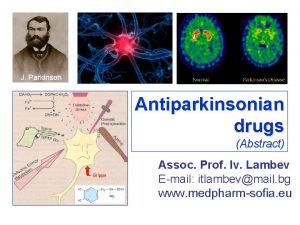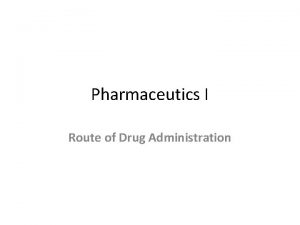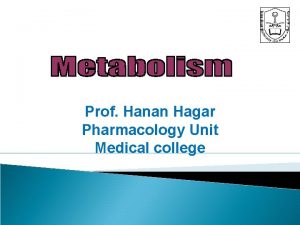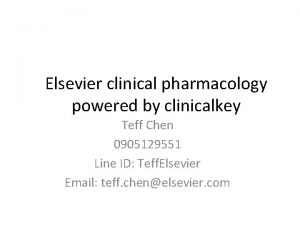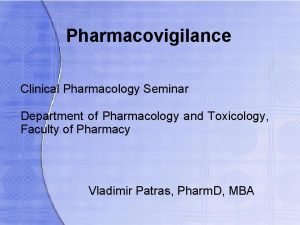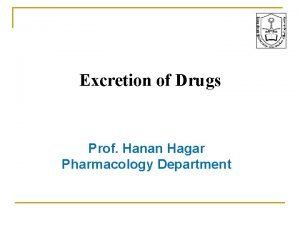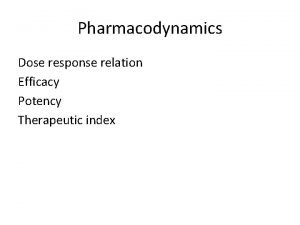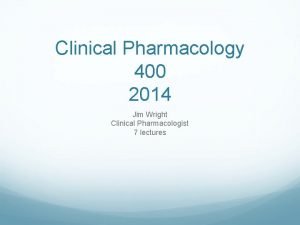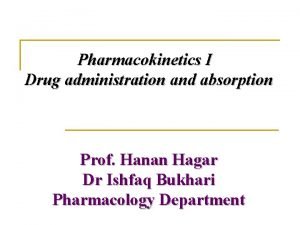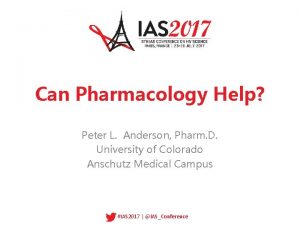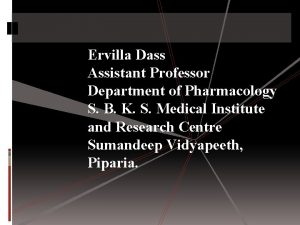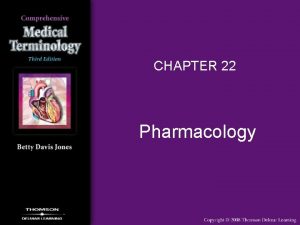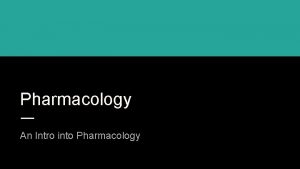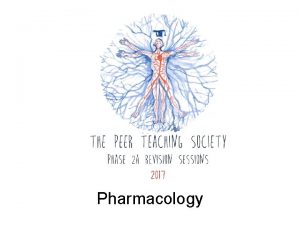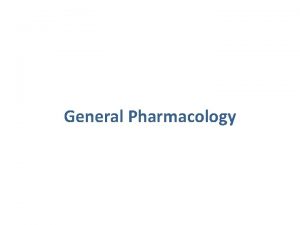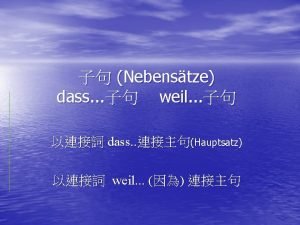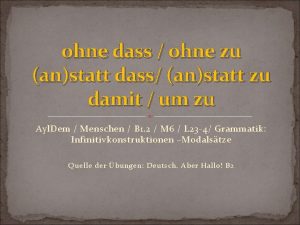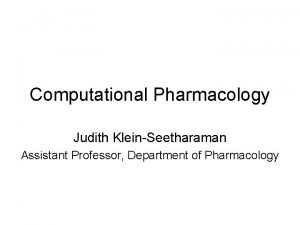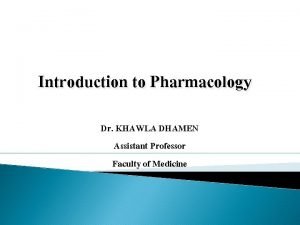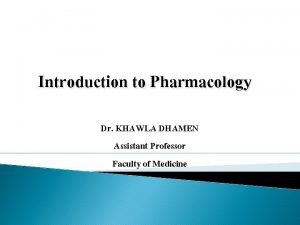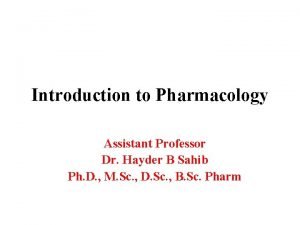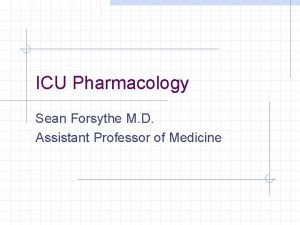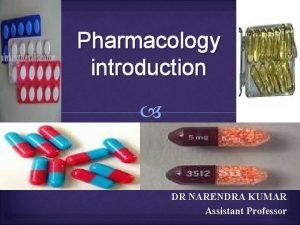Ervilla Dass Assistant Professor Department of Pharmacology S























- Slides: 23

Ervilla Dass Assistant Professor Department of Pharmacology S. B. K. S. Medical Institute and Research Centre Sumandeep Vidyapeeth, Piparia.

MUSCARINIC RECEPTOR BLOCKING DRUGS Ervilla Dass

ATROPINE

CHARACTERISTICS OF ATROPINE SOURCE Atropa belladonna Datura stramonium �Known as Jamestown weed or jimsonweed CHEMICAL NATURE An alkaloid Alternate name is d, l-hyoscyamine Nature of blockade Competitive

ACTIONS OF ATROPINE AT TISSUE SITES Eye Sphincter muscle of the iris: mydriasis Ciliary muscle: cycloplegia Atropine limits focusing to distant objects Accomodation is blocked by atropine

ACTIONS OF ATROPINE AT SMOOTH MUSCLES AND GLANDS Eye Lacrimal glands Mucus glands of the pharynx and nasal cavity Bronchial smooth muscle Gastric glands Intestinal glands Pancreas Mucus glands of the respiratory tract Lacrimal glands Eccrine sweat glands

CARDIOVASCULAR ACTIONS OF ATROPINE Heart rate Low dose High dose Systemic blood vessels Peripheral resistance Cutaneous blood vessels

SCOPOLAMINE (1) Source - Hyoscyamus niger (henbane) Chemical nature of the molecule Nature of blockade Changes in the dose response curve of muscarinic agonists in the presence of scopolamine Lower doses of scopolamine (0. 1 - 0. 2 mg) produce greater cardiac slowing than an equivalent dose of atropine. Higher doses produce tachycardia Low doses of scopolamine produce CNS effects that are not seen with equivalent doses of atropine

SCOPOLAMINE (2) Therapeutic doses of scopolamine normally produce CNS depression, manifested as drowsiness, amnesia, fatigue, dreamless sleep, reduction in REM, euphoria In the presence of pain, the same therapeutic dose occasionally cause excitement, restlessness, hallucinations, or delirium. Such excitement is always seen with large doses, as is also seen with large doses of atropine Therapeutic use - prophylaxis of motion sickness; an adhesive preparation, the Transderm scop is used

Therapeutic Uses of Antimuscarinic Agents

THERAPEUTIC USES OF MUSCARINIC ANTAGONISTS (1) Cardiovascular System - atropine is generally used for the following cases Improper use of choline esters Sinus or nodal bradycardia in cases of excessive vagal tone associated with myocardial infarct Hyperactive carotid sinus (syncope and severe bradycardia) Second degree heart block

THERAPEUTIC USES OF MUSCARINIC ANTAGONISTS (2) Gastrointestinal Tract Peptic ulcers �In Europe, Japan, and Canada, M 1 muscarinic receptor antagonists such as pirenzepine and telenzepine are used �In the U. S. H 2 histamine antagonists such as cimetidine are used Spasticity of the g. i. tract �M 3 muscarinic antagonists are being investigated Excessive salivation associated with heavy metal poisoning and parkinsonism Production of partial blockade of salivation in patients unable to swallow

THERAPEUTIC USES OF MUSCARINIC ANTAGONISTS (3) Urinary Bladder Reverse spasm of the ureteral smooth muscle (renal colic) Increase bladder capacity in cases of enuresis Reduce urinary frequency in cases of hypertonic bladder

THERAPEUTIC USES OF MUSCARINIC ANTAGONISTS (4) Central Nervous System Parkinson’s disease Motion sickness Produce tranquilization and amnesia prior to surgery and in certain cases such as labor (not a prominent use anymore) Anesthesia, to inhibit salivation (not a prominent use anymore) Prevent vagal reflexes induced by surgical manipulation of organs

THERAPEUTIC USES OF MUSCARINIC ANTAGONISTS (5) Posioning by inhibitors of acetylcholinesterase Mushroom poisoning due to muscarine In conjunction with inhibitors of acetylcholinesterase when they are used to promote recovery from neuromuscular blockade after surgery Injudicious use of choline esters Prevent vagal reflexes induced by surgical manipulation of visceral organs Atropine is used for the above

TOXICITY OF ATROPINE

CONTRAINDICATIONS TO THE USE OF ANTIMUSCARINIC AGENTS Narrow Angle Glaucoma

FLOW OF AQUEOUS AND ITS ESCAPE FROM THE EYE

CONTRAINDICATIONS TO THE USE OF ANTIMUSCARINIC AGENTS Narrow angle glaucoma Hypertrophy of the prostate gland Atony of the bladder Atony of the G. I. Tract

EVIDENCE

K. D. Tripathi M. D. , Essentials of Medical Pharmacology , 7 th Edition , 2013, pg. 113 to 121 Source of Information Chapter K. D. Tripathi Essentials of Medical Pharmacology, Jaypee Brothers Medical Publishers (P) LTD, NEW DELHI Section II DRUGS ACTING ON AUTONOMI C NERVOUS SYSTEM Author Dr. K. D. Tripathi M. D. Ex-Director Professor and head of Pharmacology Maulana Azad Medical Chapter 8 College and Anticholinerg Associated LN ic drugs and B Pant drugs acting Hospitals, on autonomic New Delhi ganglia Information Level of evidence Anticholinergi Level of c drugs, evidence classification, Grade one atropine, actions

Satoskar & Bhandarkar, Pharmacology and Pharmacotherapeutics , Revised 23 rd Edition , 2013, pg. 298 to 306 Source of Information Chapter Pharmacolog y and Pharmacothe rapeutics – R. S. Satoskar, S. D. Bhandarkar, Nirmala N. Rege POPULAR PRAKASHA N, Mumbai. Section IV Satoskar & AUTONOMI Bhandarkar C NERVOUS SYSTEM Revised 23 rd Edition, 2013 Chapter 19 Muscarinic receptor blocking drugs Author Information Level of evidence Anticholinergi Level of c drugs, evidence classification, Grade one atropine, actions

Source of Information Chapter Author Information Curr Opin Pharmacol. 2013 Jun; 13(3): 31623. doi: 10. 1016/j. coph. 2013. 04. 004. Epub 2013 May 3. A new perspective on muscarinic receptor antagonism in obstructive airways diseases. Meurs H 1, Oenema TA, Kistemaker LE, Gosens R. antimuscarinic Acetylcholine has traditionally only been regarded as a neurotransmit ter of the parasympathe tic nervous system, causing bronchoconst riction and mucus secretion in asthma and COPD by muscarinic Level of evidence
 Promotion from assistant to associate professor
Promotion from assistant to associate professor Cuhk salary scale 2020
Cuhk salary scale 2020 Analglesia
Analglesia Ansc 497
Ansc 497 What is pharmacology
What is pharmacology Pharmacology chapter 1
Pharmacology chapter 1 Pharmacology for nurses: a pathophysiological approach
Pharmacology for nurses: a pathophysiological approach Focus on pharmacology essentials for health professionals
Focus on pharmacology essentials for health professionals Venipuncture for radiologic technologists
Venipuncture for radiologic technologists Pharmacology newcastle
Pharmacology newcastle Pharmacology definition
Pharmacology definition Define pharmacology
Define pharmacology Glomerular
Glomerular Basic & clinical pharmacology
Basic & clinical pharmacology First pass effect
First pass effect Hagar conjugation
Hagar conjugation Clinical pharmacology powered by clinicalkey
Clinical pharmacology powered by clinicalkey Clinical pharmacology seminar
Clinical pharmacology seminar What is ion trapping in pharmacology
What is ion trapping in pharmacology Therapeutic index
Therapeutic index Clinical pharmacology residency
Clinical pharmacology residency Toxicology and applied pharmacology
Toxicology and applied pharmacology First pass effect
First pass effect Pharmacology tutor anderson
Pharmacology tutor anderson


